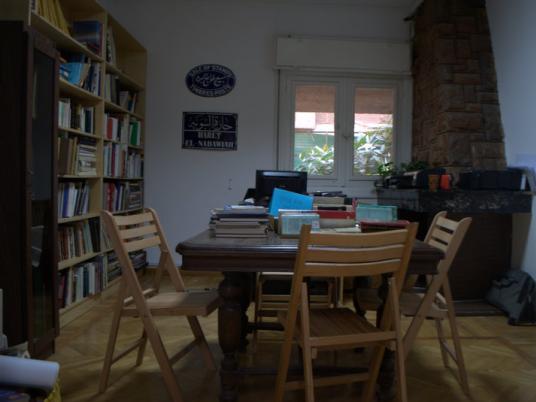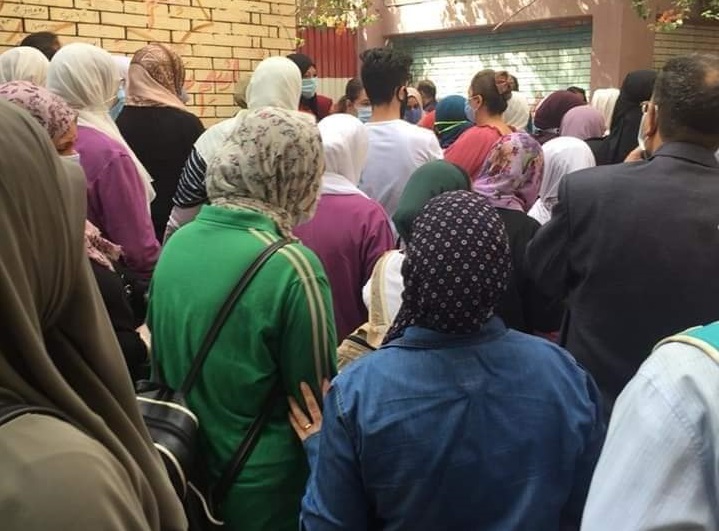
A great amalgamation of art and engineering, architectural vision determines the spaces we live in and traverse. In Cairo, questions about the function and organization of the city pervade conversations on a daily basis, whether those conversations take place on a crowded metro or in the middle of a traffic jam, as part of a political debate, or within works of film and visual art.
After years working as an architect and later as an architecture professor, May al-Ibrashy came to feel there were holes in the way education for this essential profession takes place in Egypt. Ibrashy and her colleague Mona Sennara, a civil engineer, began thinking about creating a loosely organized institution that would support young architects and students of architecture and urban planning, and provide an outlet for exploring issues that might be overlooked in engineering-heavy Egyptian architectural departments.
They called their group Megawra, and after organizing several programs focused on education and dialogue building, they finally settled into a permanent space on a quiet street in the Ard al-Golf area of Heliopolis in mid-February.
As an organization, Megawra is difficult to briefly describe because of the scope of the organization’s activities, which range from book and movie clubs to seminars and public lectures to new research initiatives. But behind this flurry of activity is a guiding desire to provide educational and professional support opportunities that are lacking within traditional educational structures — and to create a space where architects, artists, urban planners and engineers can converge, interact with and inform each other.
The roots of the organization go back to Ibrashy’s experience as an educator in the architectural field. After ending her work as a practicing architect, she began a career as a university professor and now teaches at the British University and the American University in Cairo. On re-entering the education sector, she found that resources for students who wanted to go beyond the basic confines of their education were scarce.
“When I started teaching, like everyone, I most liked working with the top 10 percent of students, and those students are often isolated and frustrated. We wanted to make a place for them to come and be creative,” says Ibrashy.
She saw the position of architecture within the educational system in Egypt as limiting.
“Architecture is within engineering here, and we wanted to make a place for people who were interested in the creative and social aspects,” she says.
Megawra was loosely formed last fall, and the members began organizing programming to address these social and creative aspects of architecture long before they officially opened up their space. One of their very first projects was a film made with the help of a small grant from the Contemporary Image Collective in October. The film, which comprises interviews with four different architects about their practice, was envisioned as a pedagogical tool and a means of sparking discussion that would encourage students to expand their thinking about personal architectural practice.
Later, in January, also at Contemporary Image Collective, Megawra co-hosted the launch of British journalists Jack Shenker and Jason Larkin’s publication “Cairo Divided,” which delves into the social, political and environmental implications of Cairo’s numerous high-end desert developments, as well as the potential consequences this kind of ex-urban expansion could have on a city. The Megawra-hosted panel discussion that accompanied the launch of the publication filled the Contemporary Image Collective space to bursting, and sparked a long and heated discussion about the future of the city and pervading attitudes toward urban development.
Since opening its doors officially in February, this dialogue-focused programming has continued. In early March, architect and urban planner Omar Nagati gave a talk on the implications of the revolution on public space, and the “informal interventions” that occur in the absence of a governmental security presence. Later this month, a presentation will take place detailing architectural conservation plans in Heliopolis.
But while important, dialogue is only one aspect of the resources Megawra seeks to provide. More than anything, Ibrashy and Sennara seek to create a support network and meeting point for young architects and students who might find themselves adrift in a challenging field.
“We have a complicated profession that is demanding and not giving,” says Ibrashy, “Architectural education does not really prepare you to be an architect or to live in the world as an architect.”
The first event they held in their new space in February addressed this particular set of concerns. As a part of a lecture called “Jack of Eight Trades,” eight architects spoke about the divergent career paths that led them to become “creative professionals that may or may not design buildings.” Ibrashy intended the event as an opportunity for those with an education in architecture to think more broadly about what opportunities such a background might open up for them.
The Megawra workspace is carefully set up to facilitate the fostering of community. Ibrashy has a specific idea of how she wants their space to be used and she hopes that they will be able to build a consistent group of frequent visitors who come to work.
“We don’t want people to treat it as a coffee shop. We want it to be a place for working, with a sense of community,” she says.
The pleasant residential neighborhood where Megawra makes its home was not chosen at random. Like true urbanists, Ibrashy and her collaborators took the location into careful consideration.
“We wanted to be central, but what we found was that Cairo really has no center. We work with a lot of teachers and students who are working or studying in universities around Heliopolis, so we decided to make our space here,” she explains.
Even Megawra’s most preliminary activities highlighted the hunger for programming centered on creative architecture and the social and political implications of urban planning, drawing huge crowds and sparking long debates. Since opening its doors, Megawra’s events have consistently brought in audiences of a hundred or more. The organization already maintains a higher level of activity and programming than many cultural institutions in Cairo, and is proving to be a conscientious venue for confronting a wide range of topics and issues that are often overlooked in university departments and the development and construction firms that structure the spaces we live in.




